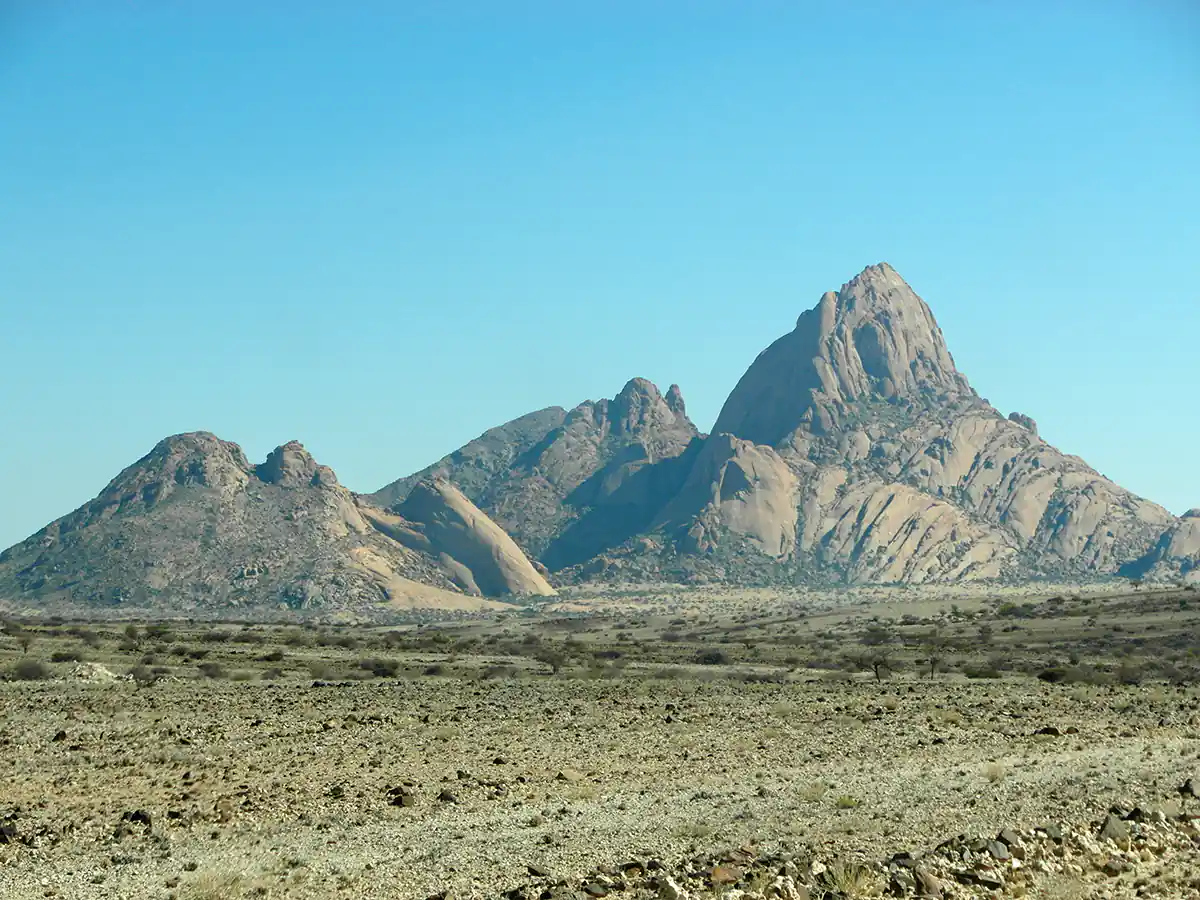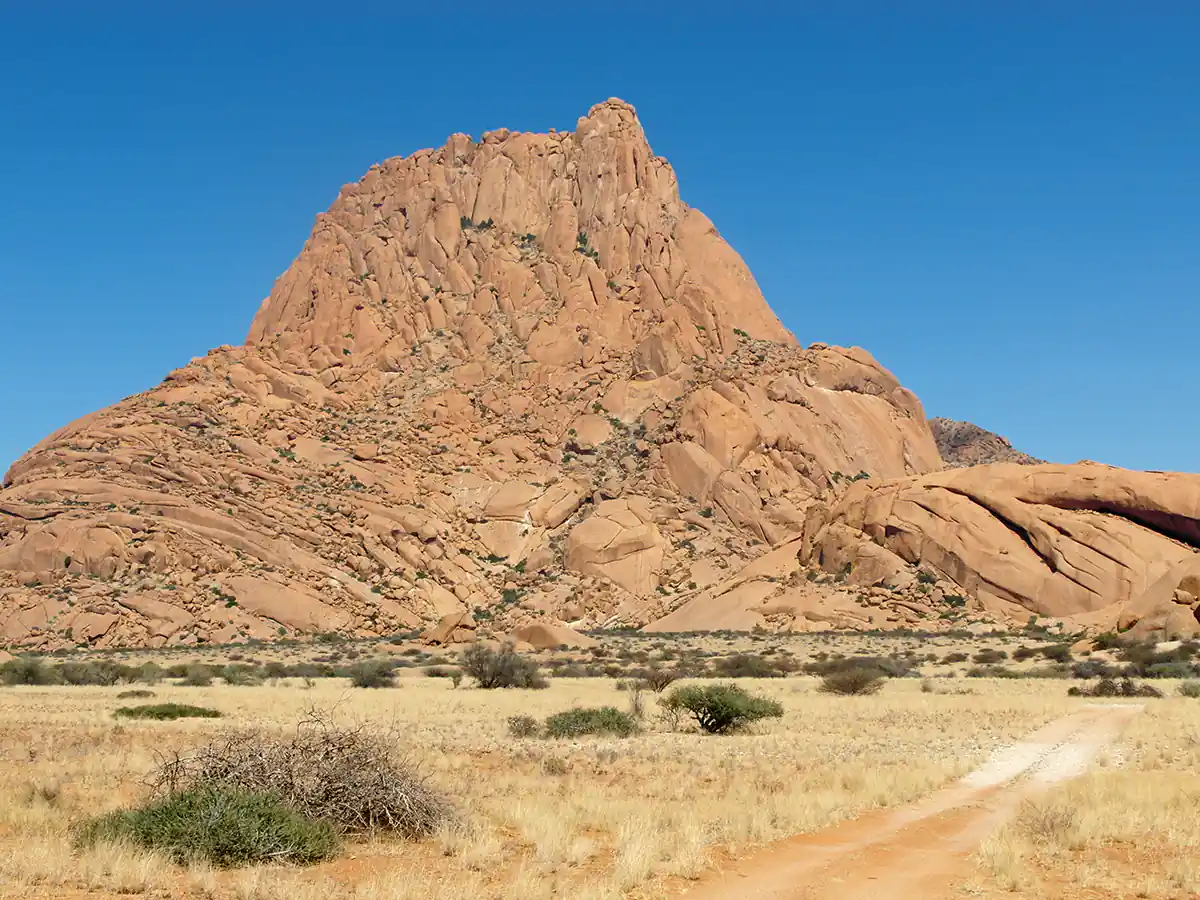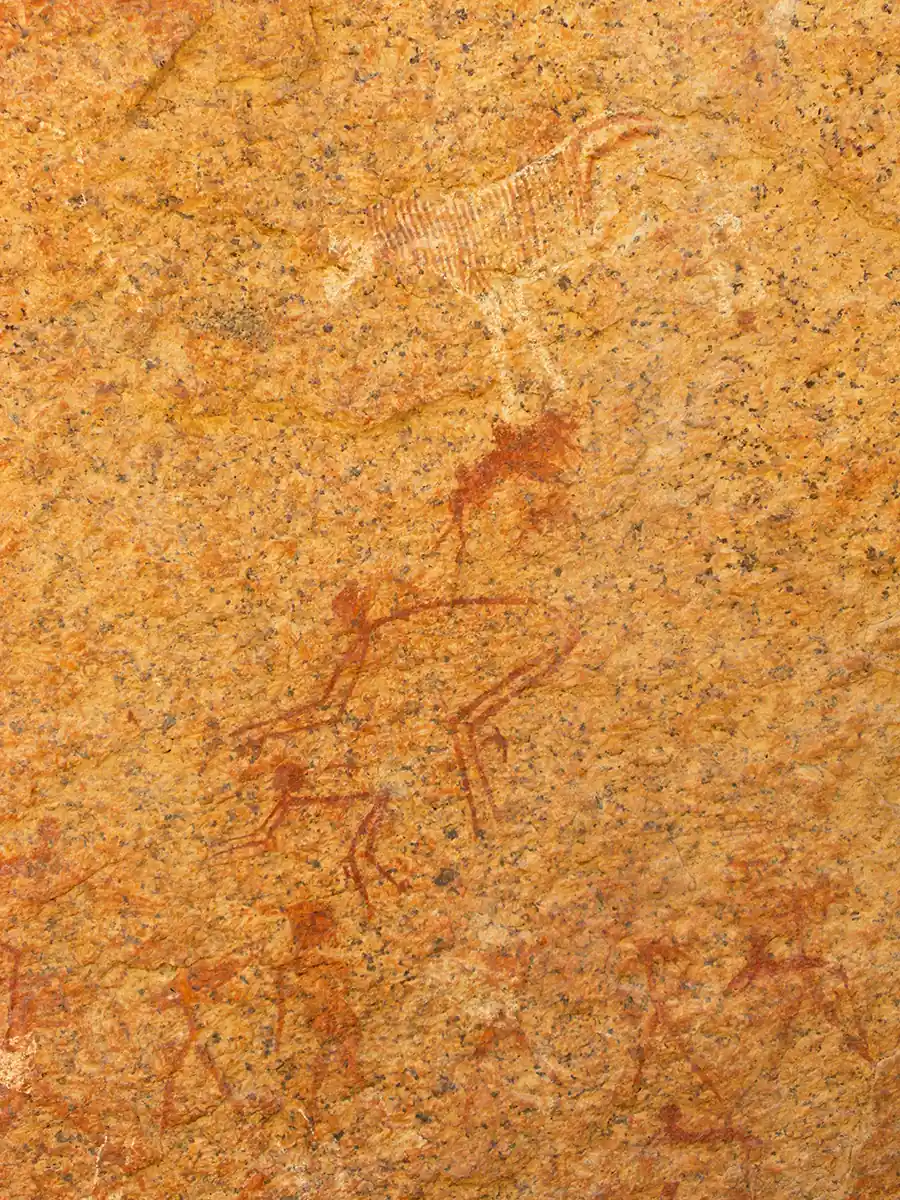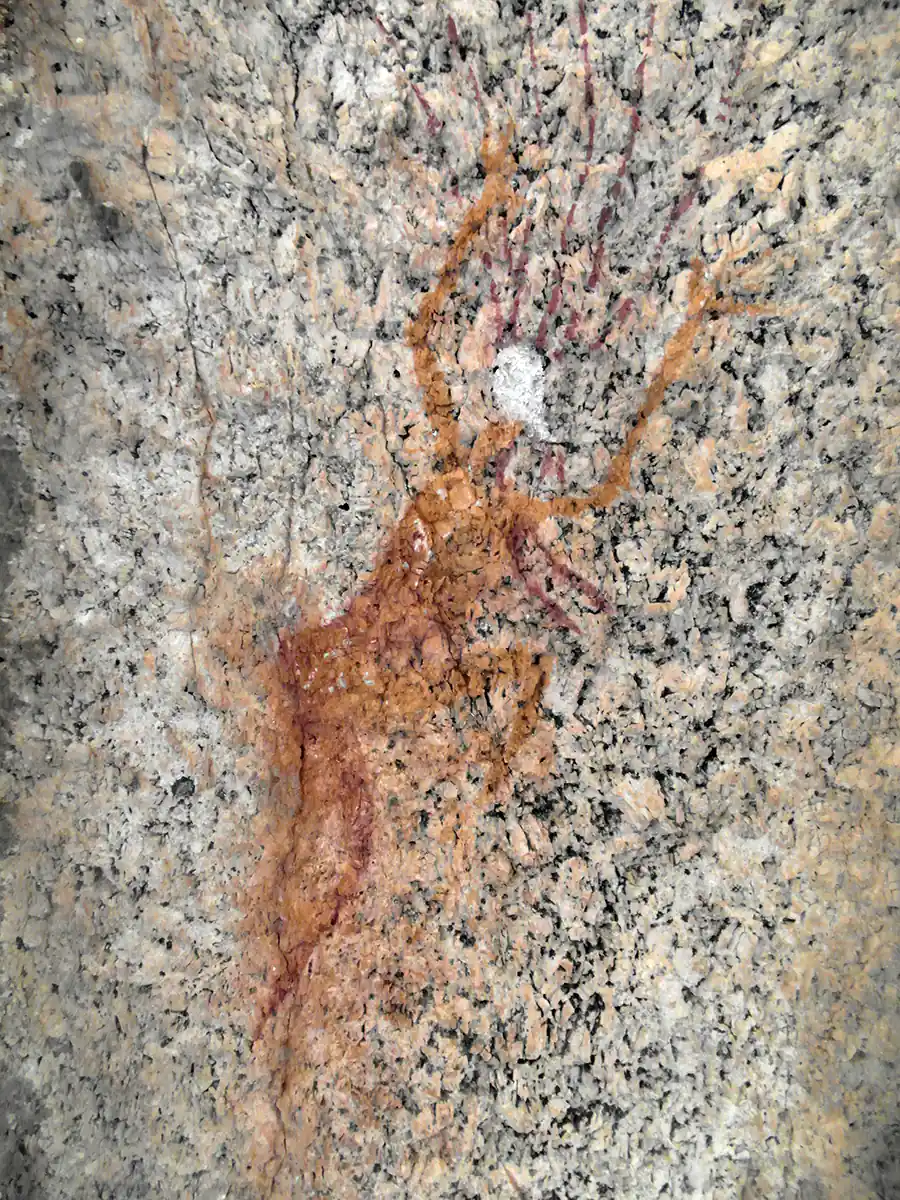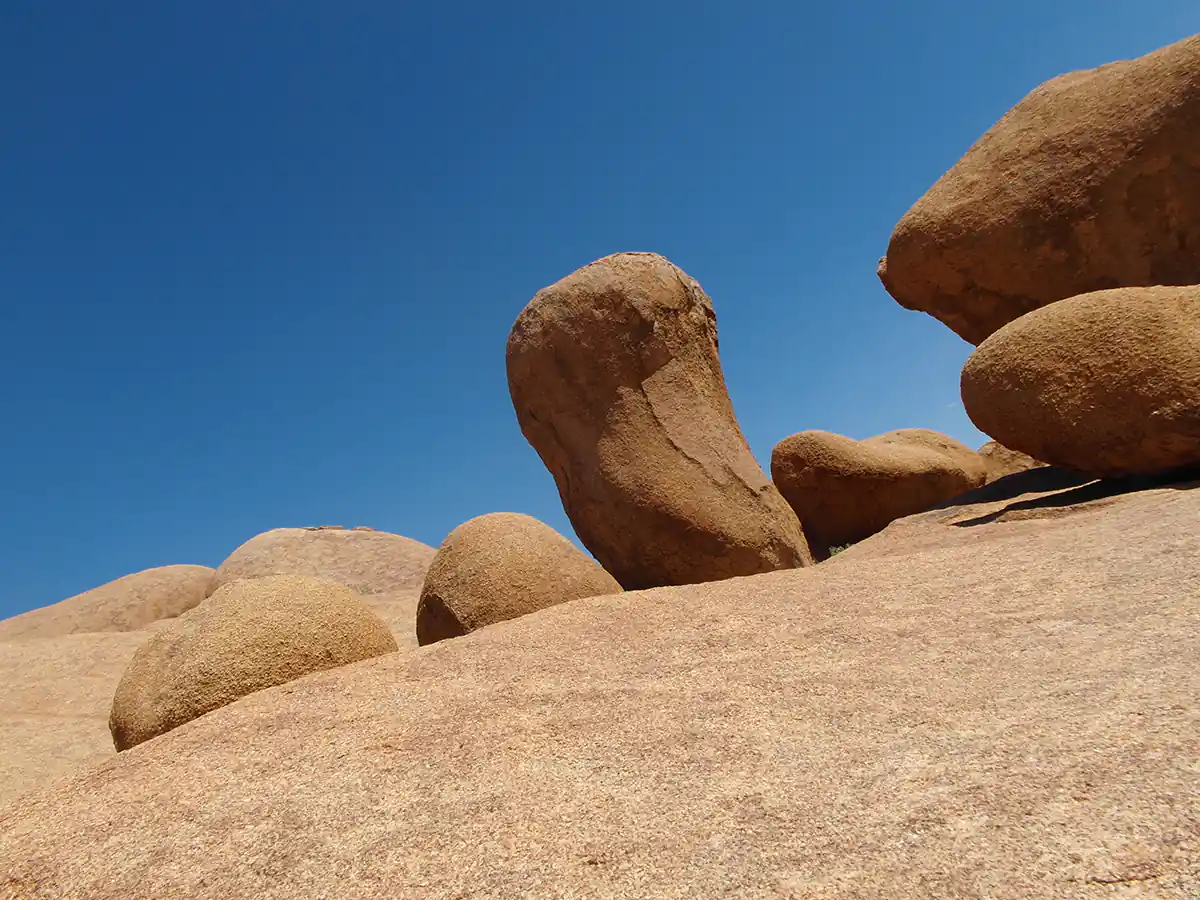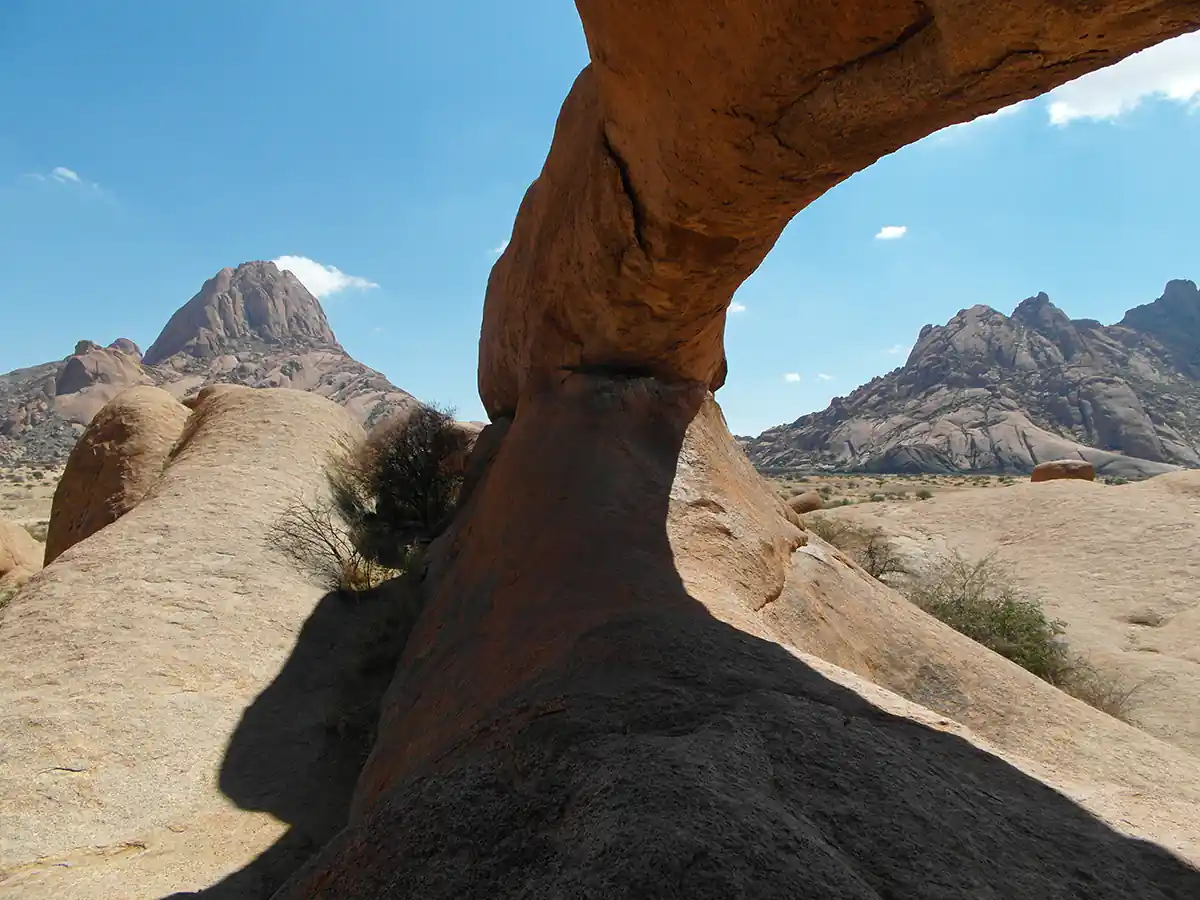Spitzkoppe Cave Paintings
The Spitzkoppe (German for "pointed dome" and also referred to as the Matterhorn of Namibia) is a group of bald granite peaks between Usakos and Swakopmund in the Namib Desert of Namibia. The granite peaks are over 120 million years old, and the highest outcrop rises 5853 feet (1784 meters) above sea level. The peaks stand out dramatically from the flat surrounding plains.
Many examples of Bushman cave paintings (at least 37 have been discovered so far) can be seen in the Spitzkoppe area, and they are believed to date back to 2000-4000 years. The bulk of them are within Bushman's Paradise, considered one of the finest collections of rock art in Namibia. This cave has been known to Europeans since the beginning of the 20th century. Unfortunately, some of these paintings today are badly damaged due to vandalism. The bushman rock paintings at Paradise Cave were proclaimed a national monument in July 1954.
Author's note: For two reasons, it is inaccurate and misleading to describe and label the rock paintings and etchings in caves strewn across the vast region of southern Africa as 'rock art.' One, while the paintings and etchings were often done with varying degrees of artistic ability, their purpose was not artistic but shamanic, ceremonial, and therapeutic. Two, while the paintings and etchings did indeed have various shamanic, ceremonial, and therapeutic functions, they are better understood to be markers of specific geographic places of power, spirit, and energy. That is most important; whatever the (supposed) meaning of the paintings and etchings, their geographic locations are primary, while the human artifacts are secondary.

Martin Gray is a cultural anthropologist, writer and photographer specializing in the study of pilgrimage traditions and sacred sites around the world. During a 40 year period he has visited more than 2000 pilgrimage places in 160 countries. The World Pilgrimage Guide at sacredsites.com is the most comprehensive source of information on this subject.
